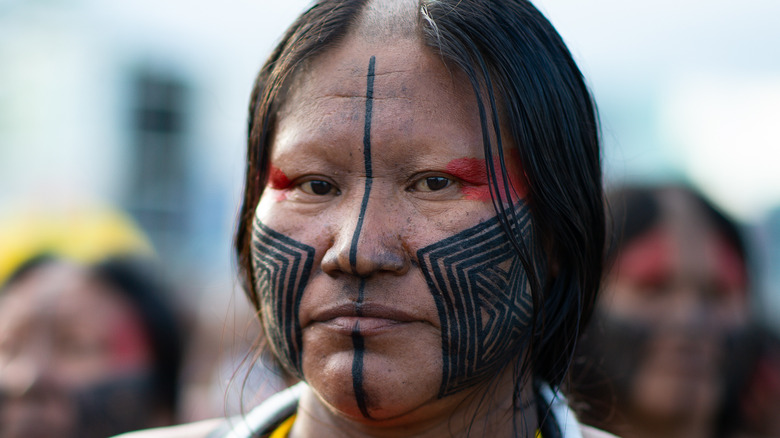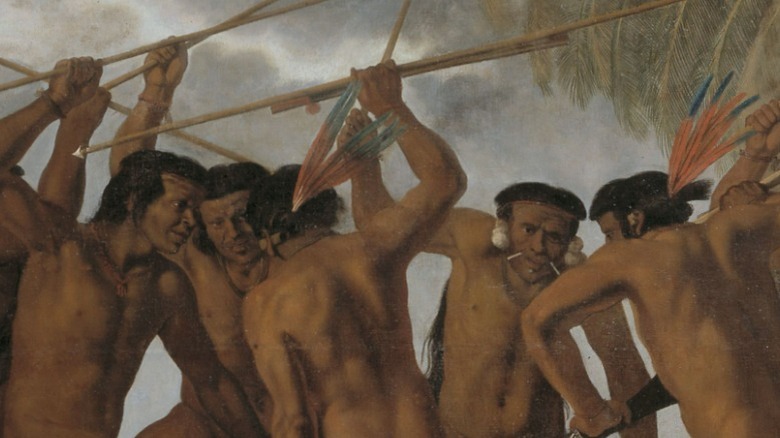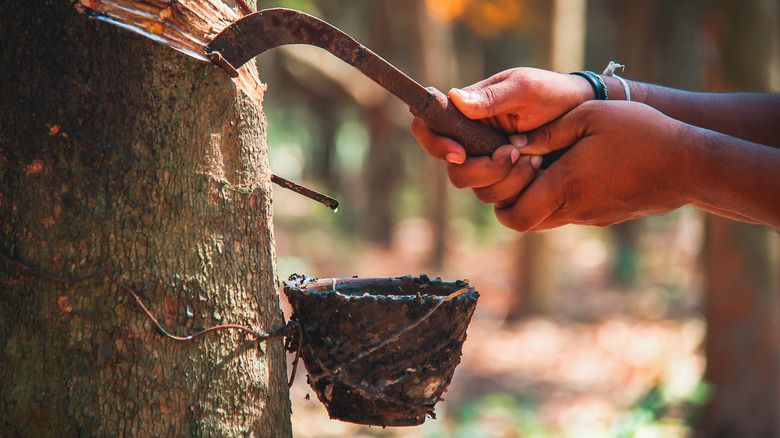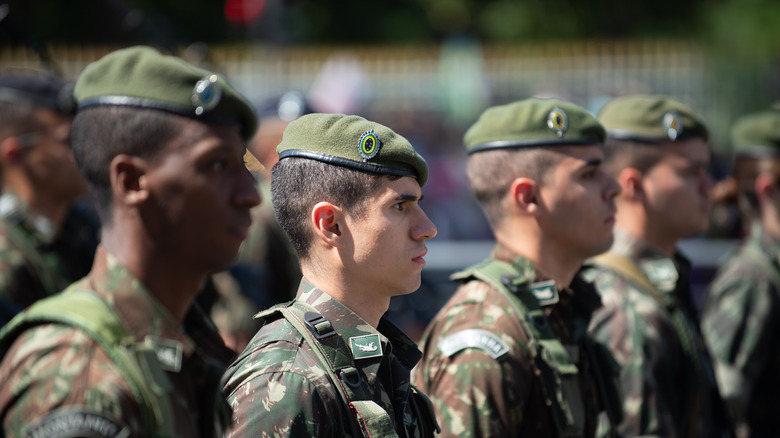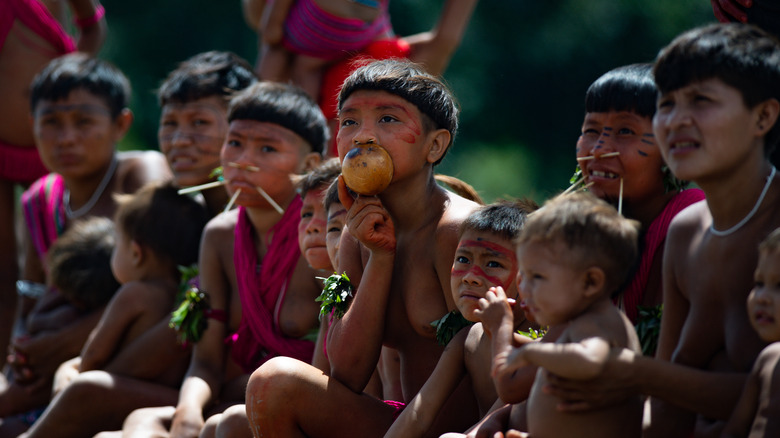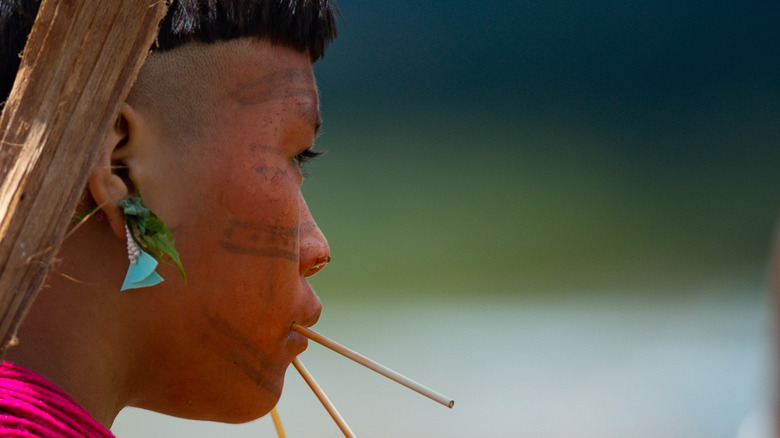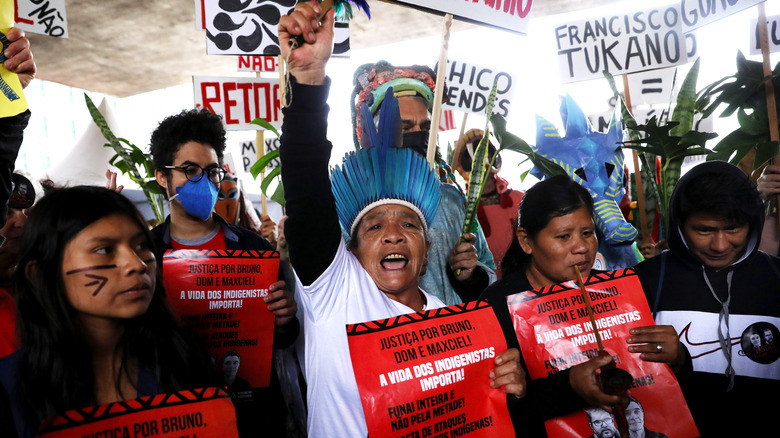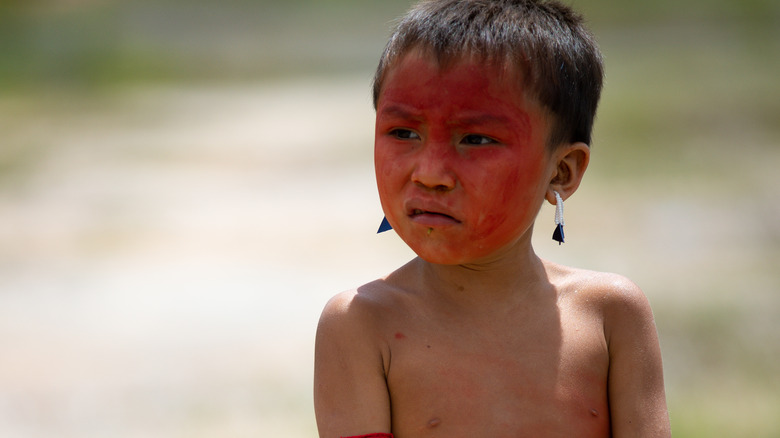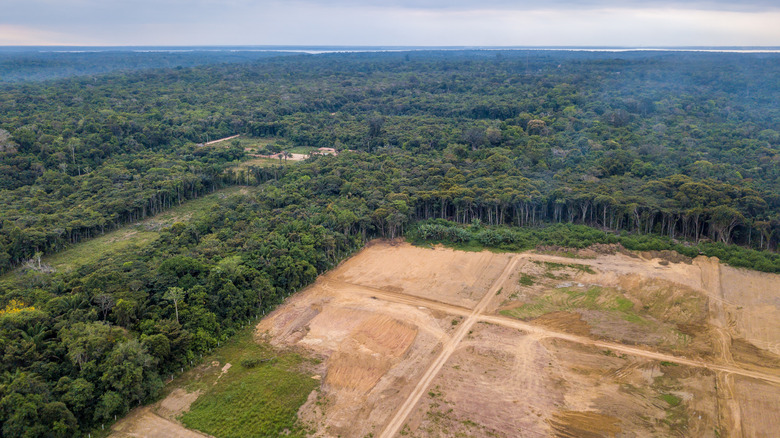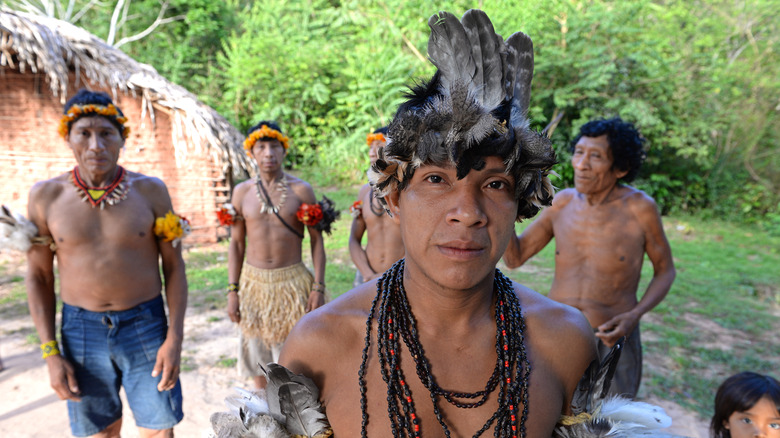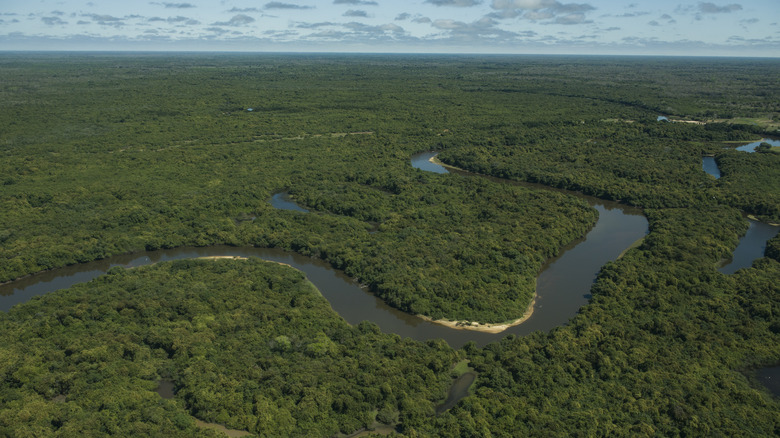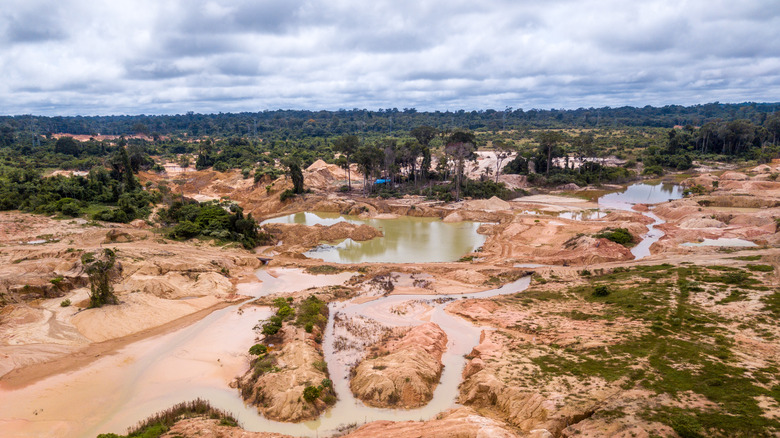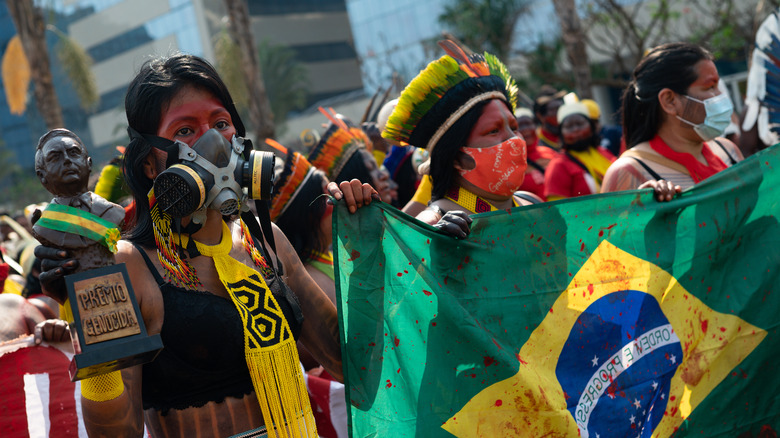The Tragic Genocide Of Brazil's Indigenous Peoples
The rainforests of Brazil contain almost 1 million indigenous people, from over 300 tribes. While thick forest has protected many of these groups from outside interference, there are far fewer tribes than there used to be. The killing of indigenous people in Brazil and the destruction of their homes and culture have been described by some as a full-blown genocide.
The systemic killing of native people in Brazil stretches began in the Colonial Period when the Portuguese fought for control of Brazil's lush forests and waterways. However, in the 20th century, particularly under Brazil's most recent military dictatorship (1964-1985), indigenous people faired little better. At times entire tribes have been exterminated in the name of progress, removed from areas where large construction projects have taken place.
Although some progress was made toward safeguarding the rights of indigenous people following the collapse of military rule, the situation in Amazon has been getting even worse in the 21st century. Under president Jair Bolsonaro, for example, there was a rapid acceleration of deforestation, illegal mining, and ranching. Indigenous lands are shrinking fast, despite fierce opposition, and in many places, indigenous people are still routinely murdered simply for living on their ancestral lands.
Brazil's violence against indigenous people stretches back to colonialism
The marginalization and destruction of Brazil's indigenous tribes are older than Brazil itself. From the moment Portuguese colonists stepped foot in the verdant forests of the New World in 1500, a war began between the indigenous people who lived there and the avaricious white settlers. The Tupi people, who still exist today, were among the first groups to fight with the Portuguese and be killed in large numbers.
Those who weren't killed in territorial wars often lived and died in chains. Before (and sometimes after) enslaved Africans were used en masse, the Portuguese often captured and enslaved native Indians, and used them to work on their plantations. Native people became a commodity and they in turn produced commodities for their enslavers. Local Banderias, would often head into the thick forests of Brazil, capturing women and children, and exterminating the men or else seizing their lands for agricultural use. Many others also simply died of disease, unaccustomed to European viruses.
While many Native peoples were simply been absorbed into Brazilian society through force, marriage, and religious conversion, others were simply wiped out. According to Survival International, indigenous tribes make up just 0.4% of Brazil's population today.
In 1963, a rubber plantation massacred the Centra Larga people
By the mid-20th century, conditions for indigenous people in Brazil remained as dire as they had been in the Colonial Era. In the early '60s for example, the notorious "Massacre at 11th Parallel" occurred, when a rubber baron looking to tap trees in the Amazon found local Cintra Larga Indians blocking their path. Rather than negotiating with the indigenous tribesmen, the company used dynamite to blow up the local village and its inhabitants. Those who survived the explosion were then shot without remorse. The incident is still notorious in Brazil, not least because it transpired that one of the gunmen had shot and mutilated a baby. Disturbing comments made by those involved make it quite clear that the perpetrators saw the Cintra Larga as vermin.
Unfortunately, the Cintra Larga's problem with white settlers has persisted into the present. Although the tribe was later granted a parcel of protected land in 1979, the world's largest diamond deposit has since been discovered in their territory, leading to further incursions. Illegal mining has brought many problems to the area once again, including drug abuse and diamond smuggling. Those hired to safeguard the group fear that another genocide is still a possibility.
Brazil's military murdered the Waimiri-Atroari to build a highway
When Brazil came under the control of a brutal military dictatorship in 1964, the treatment of indigenous tribes continued to reach new lows. The Waimiri-Atroari tribe in particular got in the way of a new highway construction project planned by the regime. Most of the Atroari were brutally "removed" in a horrific act of violence.
According to the Latin American Bureau, a study conducted by the Brazilian National Truth Commission found that around 2,000 Waimiri-Atroari people were "disappeared" during the regime, killed with machine guns, bombs, and chemical weapons. By 1983, there were only 332 Waimiri-Atroari left. To add insult to injury, in the early '80s, a hydroelectric dam project was also built on their land, causing widespread flooding.
The Waimiri-Atroari's numbers climbed back to 2,000 or more tribesmen by the 2010s but the atrocities of the past have not been forgotten. In 2019, members of the Waimiri-Atroari launched a federal suit against the Brazilian government for $13 million in damages, seeking reparations for atrocities that went unpunished under the old regime.
The Indian Protection Service helped murder tribes
In 2013, a once-lost report revealed gruesome new details about the widespread killing of indigenous people. The 7,000-page report was created under Brazil's dictatorship in 1967, and revealed that the protection service founded to help indigenous people in Brazil — the SPI — actually aided in their murder and oppression. Founded in 1910, the SPI focused on integrating native tribes, rather than protecting them, and many officials even helped Brazilian landowners to punish and kill indigenous groups.
Among the more shocking revelations in the report, it was found that government officials working in conjunction with local landowners gave indigenous tribes sugar laced with poison. The report also claims that smallpox was introduced to remote areas to wipe out certain groups, and some troublesome Indians were subjected to torture, by being whipped or having their ankles crushed.
The SPI was dismantled as a result of the report in the '60s and replaced with the FUNAI protection service which still exists today. The original document named and shamed 134 individuals but the details remained hidden until it was recovered in an old archive and leaked to The Guardian newspaper.
Indigenous land is being invaded by violent militias
In 1988, after Brazil's military dictatorship was dissolved, moves were made to protect indigenous land in the country's new constitution. In theory, indigenous people are entitled to live as they always have, and their lands are supposed to have been clearly demarcated and protected. The reality, however, is a little hazier — very little land has actually been officially ring-fenced under the law; according to Human Rights Watch the demarcation status of 241 indigenous territories was still "pending" in 2022.
Land invasions have become extremely common, and land boundaries are often challenged in court by groups looking to use the land for industry or agriculture. Under President Jair Bolsonaro's government, Brazil's right-wing party has also made it easier for people to pursue economic activity in areas where boundaries have not been fully fleshed out.
Where arguments over land use arise, matters are often solved with bullets. Loggers often arrive with armed militia who intimidate and sometimes kill indigenous people who get in the way. The frighteningly high murder rate is poorly policed, and in at least one case, four police officers were actually found to have been part of a militia group, working for a logging company.
The Guarani are frequently murdered for living on their ancestral lands
The Guarani are among the most frequently attacked indigenous groups in Brazil, plagued by violence caused by illegal loggers and ranchers. They represent the biggest tribe in the country, with around 51,000 members, however, their numbers are shrinking as is their territory. The Guarani people are nomadic but their way of life is under threat as they have been forced to hunt on smaller and smaller parcels of land. The Guarani often suffer from malnutrition and occasionally starve to death, thanks to serious land pressure. In many places the forest has been permanently cleared, making the damage difficult to reverse.
The Guarani-Kaiowa, one of the worst affected groups, was pushed off their lands in the 1940s, and after a lengthy fight to get them back, began reoccupying the area in 2015. Ever since they have been routinely attacked by hired thugs, paid for by landowners growing sugar cane or raising cattle on Gurani land. A number of the Guarani-Kaiowa have been murdered in recent years and many more have been abducted or raped. According to Eurac Research, around a quarter of murdered indigenous people belong to the Guarani-Kaiowa tribe.
The Guarani are also often subject to arbitrary arrest and accused of not being real Indians when they complain. Sadly, but not unsurprisingly, the tribe has an abnormally high suicide rate.
Miners have been starving the Yanomami people
The 38,000 Yanomami people, who live in a remote region of the Amazon, have been threatened by numerous intruders throughout the 20th and 21st centuries. Disease, cattle ranching, and mining have all contributed to a reduction in their numbers. In 2022, recent attacks on the Yanomami people and their lands were branded genocide by members of President Luiz Inacio Lula da Silva's government.
The Yanomami have suffered a great deal since the 1980s, when a gold rush occurred in their territory. According to Survival International, one-fifth of the tribe was wiped out in just seven years by a flood of miners who shot Yanomami villagers. Although Yanomami land was marked out as a protected zone in the early '90s, an infamous massacre occurred just one year later, in which 16 tribe members were shot by gold miners.
Despite the high-profile case, industrial activity in the area increased again under Jair Bolsonaro's government. Bolsonaro was keen to encourage illegal gold mining operations in the region, showing little respect for indigenous people or their rights. The mercury pollution and environmental disturbance caused by heavy industry have inevitably led to a severe famine among the Yanomami, who have been unable to find food or clean water. CNN reports that at least 570 children have died of malnutrition and disease brought by the miners since 2018. In some places, the invaders have also been shooting the Yanomami and the Munduruku people in an attempt to clear the land.
Previously uncontacted tribes are under threat from violence and disease
Around 100 tribes in remote parts of Brazil qualify as isolated or "uncontacted." They are usually aware of the outside world but their way of life is largely (if not totally) unaffected by mainstream society. Often this is a deliberate decision made by the tribe in question, following a largely negative introduction to the modern world. Under Brazil's military dictatorship, for example, attempts to lure tribes into making contact largely failed because interactions with settled Brazilians typically led to violence and sickness. During the late '80s, it became official policy to leave uncontacted tribes in peace for their own protection.
Campaigners often argue that the desire for no contact should be given out of respect, but also stress that it is extremely dangerous for isolated groups to come into contact with illnesses like flu, measles, and covid-19 — which killed around 900 indigenous people. Millennia of relative isolation has meant that most indigenous people have poor immunity.
Survival International estimates 50% of a tribe is likely to die within the first year of contact with outsiders. However, it is increasingly difficult for remote tribes to keep away from poachers, Christian missionaries, loggers, and miners, who may attack them or kill them by accident. When official contact was finally made with the once-isolated Akuntsu tribe, for example, it was discovered that gunmen working with cattle ranchers had already shot most of them in the 1980s. Today there are just three Akuntsu people left.
The Awá people are the most endangered tribe on earth
Among the many groups under dire threat in Brazil are the Awá people. The indigenous charity, Survival International claims they are the most endangered indigenous group on earth due to the presence of illegal loggers and ranchers in their territory.
During the '60s, '70s, and '80s the Awá were one of many tribes to cross paths with Brazil's military government. Many Awá were murdered or else forced to integrate into Brazilian society; cursed with weak immunity many more have died from illnesses spread by the intruders. During this dark period, Brazilian settlers were granted permission to simply take land where they found it in Awá territory. The building of a railway through the forest in the 1980s also added to the Awá's problems. Although the actions of local Brazilian ranchers against the tribe were recently declared to be genocide by a Brazilian judge, sporadic violence against the Awá is still widespread; as recently as 2011, illegal loggers burned a young girl alive when she wandered away from her home.
To date, 34% of the Awá's designated territory has already been obliterated thanks to deliberate burning and logging in the area. Sadly, the tribe's neighbors, including the Ka'apor and the Guajajara tribe have already embraced what seems like an inevitability and sold parts of their territory to hungry industrialists.
There are fewer than 50 Kawahiva people left
Today the seriously endangered Kawahiva tribe living in Matto Grosso, Brazil is one of the most threatened in the Amazon. Although the tribe once lived a settled lifestyle, they have been forced to live nomadically to escape the destruction of their forest. Little is known about the band who represent one of Brazil's elusive "uncontacted" tribes but evidence seems to suggest they have been on the move since around the time a new highway was constructed through their territory.
Unfortunately, it took years for legislators to respond to urgent calls to demarcate a boundary around their land and keep them safe. The order was finally enacted in 2016, but in the meantime, according to National Geographic, their numbers have dwindled to just 25-50 members. Both a former state governor and a police officer are among those who have been investigated for the murder of the Kawahiva people. The region in which they live is often referred to as something akin to an Amazonian wild west, where ranchers, miners, and loggers come seeking their fortune, and violence is horrifically common. Rife with illegal activity, despite the 2016 protection order a large group of intruders had to be forcibly removed from the area in 2018.
The Tanaru tribe has been completely wiped out
In 2022, the last member of the remote Tanaru tribe died, after a lifetime spent evading loggers and miners. It is believed the rest of his tribe were most likely murdered by industrialists, although very little is known about who the Tanaru were.
Nicknamed "the man of the hole" because of the pits he dug to hide in, the Tanaru man was unsurprisingly deeply distrustful of outsiders. On one occasion when an outreach team left gifts for him, he warded them off with a bow and arrow and, in 2005, he finally shot a visitor in the chest. Eventually, a small patch of land was ring-fenced for the man to live in and the government's Indian protection gave up trying to talk to him directly. Some ranchers were so incensed by the government's action to safeguard the lone Tanaru man, they responded to the move with death threats.
The man continued to live a peaceful nomadic life by himself for many years. He died of natural causes in his hammock, aged around 60 years old. The tribesman's lonely life drew the attention of the media and sparked discussion about the widespread genocide of tribes in the Amazon that has sometimes gone unreported.
Former President Jair Bolsonaro was accused of genocide in 2021
The plight of indigenous people in Brazil became so bad under President Jair Bolsonaro, that during his tenure he was accused of committing genocide. Some of Bolsonaro's comments alone demonstrate a callous disregard for the lives of Brazil's Indians. For example, he is famous for remarking: "It's a shame that the Brazilian cavalry hasn't been as efficient as the Americans, who exterminated the Indians" (via Survival International).
Bolsonaro's attitude has been reflected in his controversial policy decisions. He has consistently made it easier for mining companies to operate on indigenous land while defunding governmental bodies such as FUNAI, designed to protect native people. His time in office has resulted in a wave of killings as land-hungry Brazilians increasingly clashed with local tribes. According to NBC, during Bolsonaro's presidency, murders of indigenous people were at their highest level in 11 years, in 2019.
Viewing the amazon as a means to enrich his voters, Bolsonaro has presided over a marked period of increased deforestation, threatening the lives of indigenous people and the environment as a whole. Longstanding moves to mark out areas designated areas for indigenous people have also been halted in favor of industrial projects.
